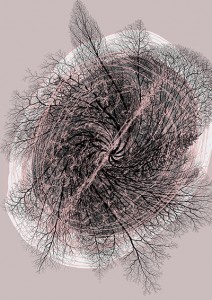GV Art presents a new exhibition in which seven contemporary artists consider the human brain: the physical entity described by science, the seat of the mind and soul, and origin of the creative impulse.
Their works are shown alongside a film of a Neuropathologist performing a “brain cut up.” For the viewer, this juxtaposition is the starting point for a dialogue between how we see the brain and understand its functions scientifically and what happens when this physical organ that produces our individual visual and creative understanding becomes the subject for the artist.
The seven London-based artists – Susan Aldworth, Annie Cattrell, Andrew Carnie, Katharine Dowson, Rachel Gadsden, David Marron and Helen Pynor – have diverse practices but each uses science as part of their investigative process. They have responded to the subject using media and technologies including sculpture, painting, drawing, etching, photography and scientific materials. The inspiration for Brainstorm was an invitation earlier this year by Dr David Dexter, Reader in Neuropharmacology and Scientific Director Parkinson’s UK Tissue Bank, Centre for Neuroscience, Imperial College, London, for GV Art to observe a brain cut up. And, on 17 November, curator Robert Devcic and artists Katharine Dowson and David Marron spent more than two hours observing a brain cut up at the Joint MS Society and Parkinson’s UK Tissue Bank at Imperial College, London. Some of the works in this exhibition were made in direct response to this experience.
The gallery hopes to have the actual brain and brain slices involved at that event on display in coming weeks. GV Art is the only private gallery in the country to hold a Human Tissue Authority Licence for
Public Display and Storage.
GV Art is a contemporary art gallery which aims to explore and acknowledge the inter-relationship between art and science, and how the areas cross over and inform one another. The gallery produces exhibitions and events that create a dialogue focused on how modern man interprets and understands the advances in both areas and how an overlap in the technological and the creative, the medical and the historical are paving the way for new aesthetic sensibilities to develop.

